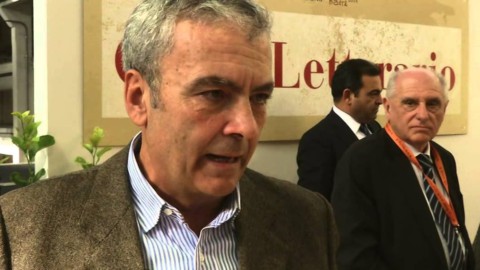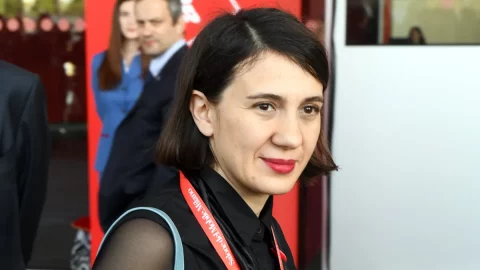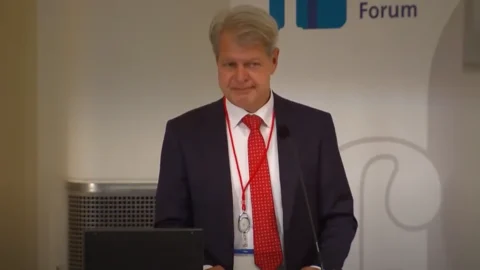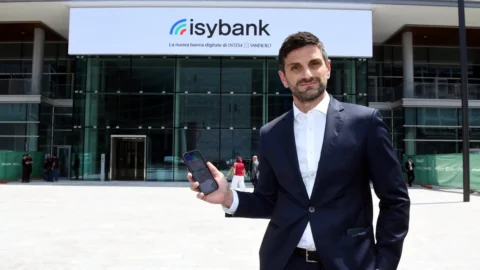Rare metabolic diseases, there are now more possibilities for diagnosis and treatment for the little sick ones. And above all, newborn screening is the tool to "secure" the health of children and undertake treatments which, from diet therapy to liver transplantation in particular and selected cases, can restore serenity to families and restore a more than adequate growth perspective to the children.
All the scientific aspects relating to rare metabolic diseases and the new frontiers of diagnostics, drug treatments and gene therapy were discussed during the world congress of the SSIEM (Society for the Study of Inborn Errors of Metabolism), which ended on Friday 9 September in Rome. We talked about it with Prof. Carlo Dionisi Vici, head of the Metabolic Diseases Unit of the Bambino Gesù Pediatric Hospital, who brought the conference back to the capital with the organizational contribution of Alfa Fcm.
The international congress of the SSIEM society of metabolic diseases has just concluded in Rome: what are the pathologies that fall under? this definition? how many people and, in particular, children are affected by these pathologies and what balance can be drawn from the congress?
“If taken together, there are over 600 metabolic diseases and they make up about 10% of the “rare diseases”. At the origin of a metabolic disease there is always a genetic defect, due to mutations in the DNA, which by altering the cellular metabolism compromises the function of the organs, putting the patient at risk of handicap, disability or, in the most serious cases, death. These are diseases that mainly affect children but can also affect adults. There is still no certain data on the number of patients affected by Metabolic Diseases. Based on a multi-center research conducted over 10 years ago, financed by the Ministry of Health and coordinated by the Bambino Gesù Hospital, there were over 2000 pediatric patients in Italy.
The congress that has just concluded in Rome was certainly a success both in terms of scientific content and in terms of participation. For the first time the number of members, coming from over 80 countries, has almost reached 3000”.
The high participation of experts and researchers who arrived in Rome from all over the world demonstrates the growing interest in these diseases which, although limited in number, have a major impact on the families who suffer them. What innovations did the congress bring regarding research on these diseases and what treatment prospects did it open up?
“Such a large number of participants confirms the growing interest shown in recent years by the medical and scientific community. The number of diseases, until now considered incurable, for which therapies are finally beginning to be available, is progressively increasing. During the congress, the topic of "innovative therapies" was addressed in numerous reports: new drugs, revolutionary laboratory methodologies for verifying their efficacy and the most recent successes in the field of gene therapy were discussed. Of course, these achievements are the result of growing research and development collaboration between universities, research institutes and pharmaceutical companies. The latter present at the congress both with large multinational companies and with small biotech companies.
Thanks to the contribution of the most eminent international researchers, the diagnosis and prevention of metabolic diseases was also discussed. With regard to this last point, the theme of newborn screening was tackled, one of the most effective strategies for improving the prognosis of these diseases: being able to identify the patient early from the first days of life allows in fact to promptly start a specific therapy before symptoms and their outcomes appear”.
In August, Parliament passed a law that expanded newborn screening from 3 to 40 rare diseases. How is it possible to recognize these diseases and what scenarios does early diagnosis open up?
“With the approval of the law all newborns will finally be able to take advantage of this important prevention programme. Up to now in Italy less than half of those born have had access to screening and it was therefore essential to overcome this territorial disparity, which in fact discriminates against newborns on the basis of the region or, in some cases, the hospital where they were born.
Screening is performed within the first 48-72 hours of life and consists of taking a few drops of blood from the newborn's heel on which a laboratory test capable of highlighting the characteristic alterations of the disease is carried out. It is possible to identify over 40 different metabolic diseases: organic acidemias, defects in the oxidation of fatty acids, amino acid diseases and some defects in the urea cycle. They are all diseases in which early diagnosis and timely treatment can prevent the appearance of often disabling symptoms and, in the most serious cases, even death. About 500.000 children are born in Italy every year and, based on the experience already gained in recent years in some Italian regions, we can expect to identify about 300 new cases each year through screening. Since the treatment of many of the diseases identifiable with screening is based on specific dietary therapeutic interventions, or in some selected cases, on liver transplantation, the SSIEM congress also addressed these issues by comparing the different experiences.
However, it should not be forgotten that a positive screening represents the beginning of a path to be framed within a screening "system": a long-term program that puts the patient at the center of a network which, starting from the laboratory that performs the screening test involves the Reference Clinical Center in close connection with basic medicine and with the territory".
Have any novelties emerged in? drug therapies and gene therapy? What is Italy's position in this field and what realistic hopes can be given to patients?
“Despite the scarce investments in scientific research, Italy still represents a reality of excellence in the field of innovative therapies. Our researchers and our doctors were able to compare themselves with other colleagues demonstrating that they can offer patients and their families a standard of care equal to, if not better than, that of more advanced countries. For such a dynamic and innovative medical sector, the future is directly linked to research and for this reason it is necessary to maintain and increase the funds available".





